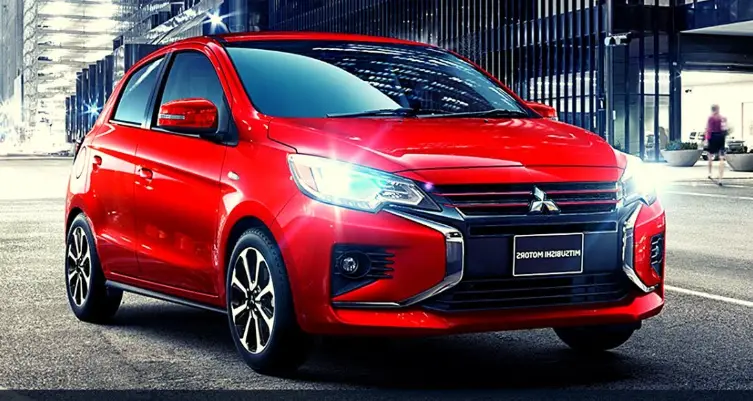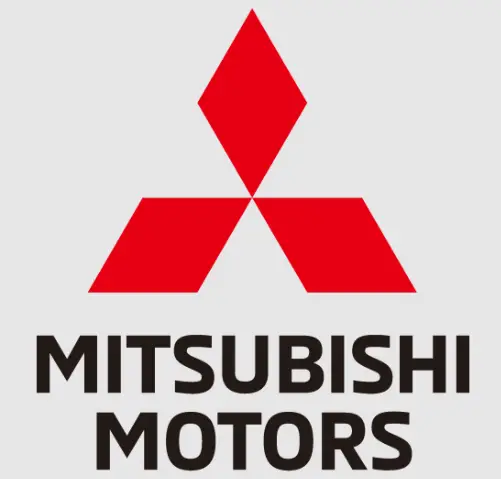2023 Mitsubishi Mirage Maintenance Schedule
That’s a great introduction to the 2023 Mitsubishi Mirage Maintenance Guide! It sets a clear and inviting tone, emphasizing the guide’s comprehensive nature and its relevance to both experienced car owners and newcomers. It also conveys the idea of a collaborative effort to maintain the vehicle, making it user-friendly. Well done!
Emission-Control System Maintenance
Your vehicle is equipped with an emission-control system that meets all the requirements of the U.S. Environmental Protection Agency and Environment Canada. The emission-control system is made of:
- a positive crankcase ventilation system
- an evaporative emission-control system
- an exhaust emission-control system
To be sure the emission-control system works properly, have your vehicle inspected and maintained by an authorized Mitsubishi Motors dealer or a repair facility of your choice. This should be done at the time or mileage specified in the “WARRANTY AND MAINTENANCE MANUAL”.
These, and all the other “general” maintenance services listed in this manual, need to be performed to keep your vehicle running properly and reliably.
You should also have an inspection answer-vice any time you suspect a malfunction.
NOTE
- To meet government regulations and pro-mote cleaner air, your vehicle is equipped with an onboard diagnostic system (OBD). The engine electronic control module that controls OBD functions stores various data (especially about the exhaust emissions). This data will be erased if the battery cable is disconnected, which could make a rapid diagnosis difficult. Do not disconnect the battery cable when the engine malfunction indicator (“SERVICE ENGINE SOON” or “Check engine light”) is ON.
Spark Plugs
Spark plugs must fire properly for good engine performance and emission-control. Do not reuse them by cleaning or recapping. Change them at the mileage listed in the “WARRANTY AND MAINTENANCE MANUAL”.
NOTE
- Use the spark plugs listed under “Engine specifications” on page 11-5 or plugs that are exactly the same. Other plugs could cause engine damage, performance problems or radio noise.
Fuel hoses
- Check the hose surfaces for any heat and mechanical damage, hard and brittle rubber, cracking, tears, cuts and abrasions. Pay special attention to the hoses closest to high heat sources such as the exhaust manifold. Check all the hose connections, such as clamps and couplings, to make sure they are secure and that there are no leaks. If you see any wear or damage, replace the hoses immediately.
Intake valve clearance
Have the valve clearance checked at an authorized Mitsubishi Motors dealer at the mileage specified in the “WARRANTY AND MAINTENANCE MANUAL”.
If the engine sounds abnormally loud, have adjustments made by an authorized Mitsubishi Motors dealer.
Fuel system (tank, pipe line and connection, and fuel tank filler cap)
Check these regularly for damage or leaks in the fuel lines and connections. Check the fuel tank filler cap for damage or looseness. Pay special attention to the fuel lines closest to high heat sources such as the exhaust manifold.
WARNING
- If you see a fuel leak or if you smell fuel, do not run the engine. Any spark (including from the ignition), flame or smoking material could cause an explosion or fire. Call an authorized Mitsubishi Motors dealer or a repair facility of your choice for assistance.
Evaporative emission control system (except evaporative emission canister)
If the fuel-vapor vent line is clogged or dam-aged, the fuel-vapor mixture will escape, pol-luting the air.
Have the system checked at an authorized Mitsubishi Motors dealer at the mileage spec vied in the “WARRANTY AND MAINTE-NANCE MANUAL”.
General maintenance
The next pages list the maintenance service recommended by Mitsubishi Motors Coro-ration. In addition to the general maintenance that needs to be performed at the times listed,
there are other parts which do not usually need regular maintenance.
But, if any of these parts stops working properly, your vehicle performance could suffer. Have these items checked if you notice a problem with them.
If you have any questions, see your authorized Mitsubishi Motors dealer for assistance.
Disc Brake Pads
Good brakes are essential for safe driving. Check the brake pads for wear. For good braking performance, replace the brake pads with the same type pads as the originals.
Brake hoses Brake hoses and tubing should be checked for
- Severe surface cracking, scuffing or worn spots. If the fabric casing of the hose is showing through any cracks or worn spots in the rubber hose cover, the hose should be replaced. The brakes can fail if the hose wears through.
- Improper installation may cause twisting, or wheel, tire or chassis interference.
Ball joint, steering linkage seals and drive shaft boots
Check the following parts for damage and grease leaks
- Ball joint boots of the front suspension and steering linkage
- Bellows on both ends of the drive shaft
Exhaust system
WARNING
Carbon monoxide gas from your vehicle’s exhaust is poisonous. Breathing these fumes can cause unconsciousness or death.
The best way to keep carbon monoxide gas from entering inside your vehicle is to have the engine exhaust system properly serviced. Have a competent mechanic inspect the complete exhaust system and nearby body areas for broken, damaged, deteriorated, or mispositioned parts if you notice any of the follow
- A change in the sound of the exhaust system
- The smell of exhaust fumes inside the vehicle
- The underside or rear of the vehicle is damaged
Also check the exhaust system each time the vehicle is raised for lubrication, oil changes, or required service. Any open seams or loose connections could let dangerous exhaust fumes seep into the luggage and passenger compartments.
Check for any of the following conditions
- Check for holes or exhaust gas leaks caused by corrosion or damage.
- Check the joints and connections for looseness or exhaust gas leaks.
- Check the rubber hangers and brackets for damage.
Hood lock release mechanism and safety catch
The hood lock release mechanism and hood safety catch should be checked, cleaned, and oiled when needed for easy movement and to prevent rust and wear. Use Multipurpose Grease NLGI Grade 2 sparingly for all sliding parts of the hood latch and release lever. Work the grease into the hood lock mocha knish until all the movable surfaces are covered.
Also, put a light coat of the same grease on the safety catch wherever moving parts touch.
FAQs
Mitsubishi suggests changing the oil and filter every 7,500 miles or 12 months, whichever comes first.
Replace the air filter every 30,000 miles or as needed if it is unclean.
Replace the cabin air filter every 15,000 miles or as needed to provide clean,
Replace the cabin air filter every 15,000 miles or as needed to provide clean, fresh air inside the car.
It is recommended that the brake fluid level be checked every 15,000 miles or as needed.
Spark plugs should be replaced every 60,000 miles.
Every 60,000 miles, the transmission fluid should be changed.
Inspect the drive belts for wear and tear every 15,000 miles or as needed.
Change the engine coolant every 60,000 miles or 5 years, whichever comes first.
Every 15,000 miles, inspect the brake pads and rotors and replace them as needed.
To maintain optimal engine efficiency, a fuel system cleaning is advised every 30,000 miles.
Inspect the battery condition every 15,000 miles and replace it if necessary.
Because the 2023 Mirage has a timing chain, there is no required timing belt replacement frequency.
Wheel alignment should be checked and changed as needed whenever you have steering problems or unusual tire wear.
Inspect the suspension components for wear and tear every 15,000 miles and repair as needed.
Useful Link
View Full PDF : 2023 Mitsubishi Mirage Owner’s Manual | Auto User Guide


